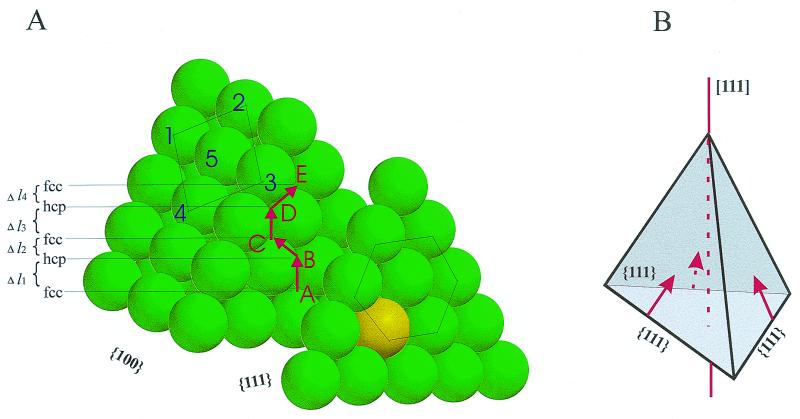Figure 4.
A model for the quantized plastic elongation of a gold nanowire. (A) A nanowire has been cleaved along {111} planes to expose the slippage of a neighboring layer during plastic deformation. The atoms labeled 1–5 show the standard fcc arrangement of gold. The red line marks the stepwise trajectory of an atom from the slipping plane (gold colored). The slip results in the formation of a stacking fault and creation of a locally hcp crystal structure (AB transition). A subsequent slip (BC transition) restores the local structure back to the fcc arrangement. The slips displace the {111} planes by 1.66 Å each time. However, their contribution to the elongation of the nanowire will depend on their relative inclination with respect to the pulling direction (e.g., Δl1, Δl2, etc.; see Table 1). (B) Tetrahedral arrangement of {111} planes when the crystal is oriented in the [111] direction. Stacking faults can occur in one or all of the {111} planes that are oriented toward the pulling direction (three planes in this case; see Table 1).

